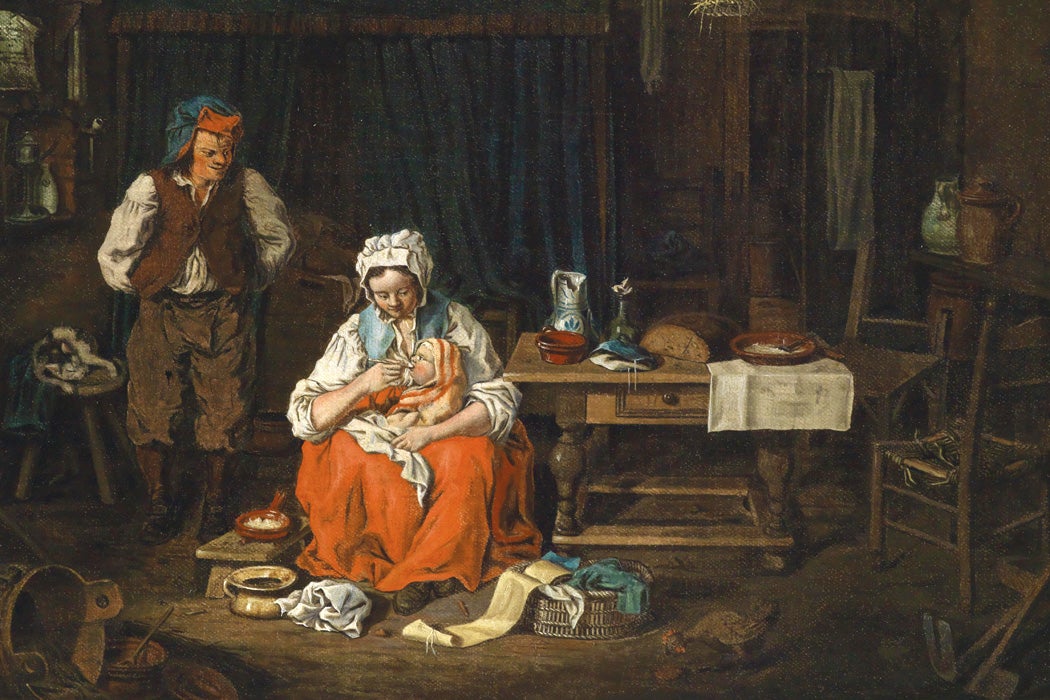You know those stories that crop up now and then about adults who believe human breast milk is a superfood with amazing health benefits? According to historian Marylynn Salmon, they’re nothing new. Back in seventeenth and eighteenth century England and America, breast milk was a common treatment for all sorts of ailments.
In 1584, physician Thomas Muffet wrote that breast milk was good “not only for young and tender infants, but also for men and women of riper years, fallen by age or by sickness into compositions.”
Salmon writes that medical and recipe books in the seventeenth century recommended human milk as a cure for consumption, pain, and hysteria. During childbirth, women drank milk from another mother to speed delivery. Breast milk was recommended especially for eye problems, from soreness to blindness. To restore eyesight, seventeenth-century healer Elizabeth Dowinge recommended “a little woman’s milke” mixed with herbs, honey, frankincense… and urine.
In the medical texts of the day, breast milk was described as whitened blood—essentially the same substance that had sustained the baby’s development in the womb. In fact, Salmon writes, early modern medical experts regarded all fluids of the human body as different forms of the same thing—some more powerful than others. After semen, breast milk possessed the most life-giving force.
The cultural force of breastfeeding was clear from the way ministers adopted it as a religious metaphor. Seventeenth-century Puritan pastor Thomas Shepard described the gift of eternal life as being “laid in the bosom of Christ, when sucking the breasts of the grace of Christ.” Ministers commonly referred to themselves as breasts of God, and worshipers at Sabbath services were urged to “suck the breast while it is open”—in other words, pay attention to the sermon.
Salmon writes that this reverence for breast milk reflected a cultural exaltation of motherhood. For women, this was a double-edged sword. Mothers were praised for doing even the most routine dirty work in service of their children, like changing diapers. But on the other hand, women were derided for trying to excel in other areas. Significantly, the other distinctly female bodily fluid, menstrual blood, was viewed as foul and unclean. Men often used the very fact of menstruation to classify women as dirty and inferior.
Get Our Newsletter
The idea of breast milk as a cure-all also reflects an understanding of its importance to infant development. Babies unable to nurse rarely survived infancy (and women who attempted to bottle-feed their babies came to be seen as a threat to society).
Still, given historians’ longstanding tendency to look back at past centuries in terms of the actions and ideas of men, it’s worth remembering the significance earlier societies assigned to some distinctly female activities. And maybe it makes today’s adult breast-milk drinkers a bit more comprehensible, too.







